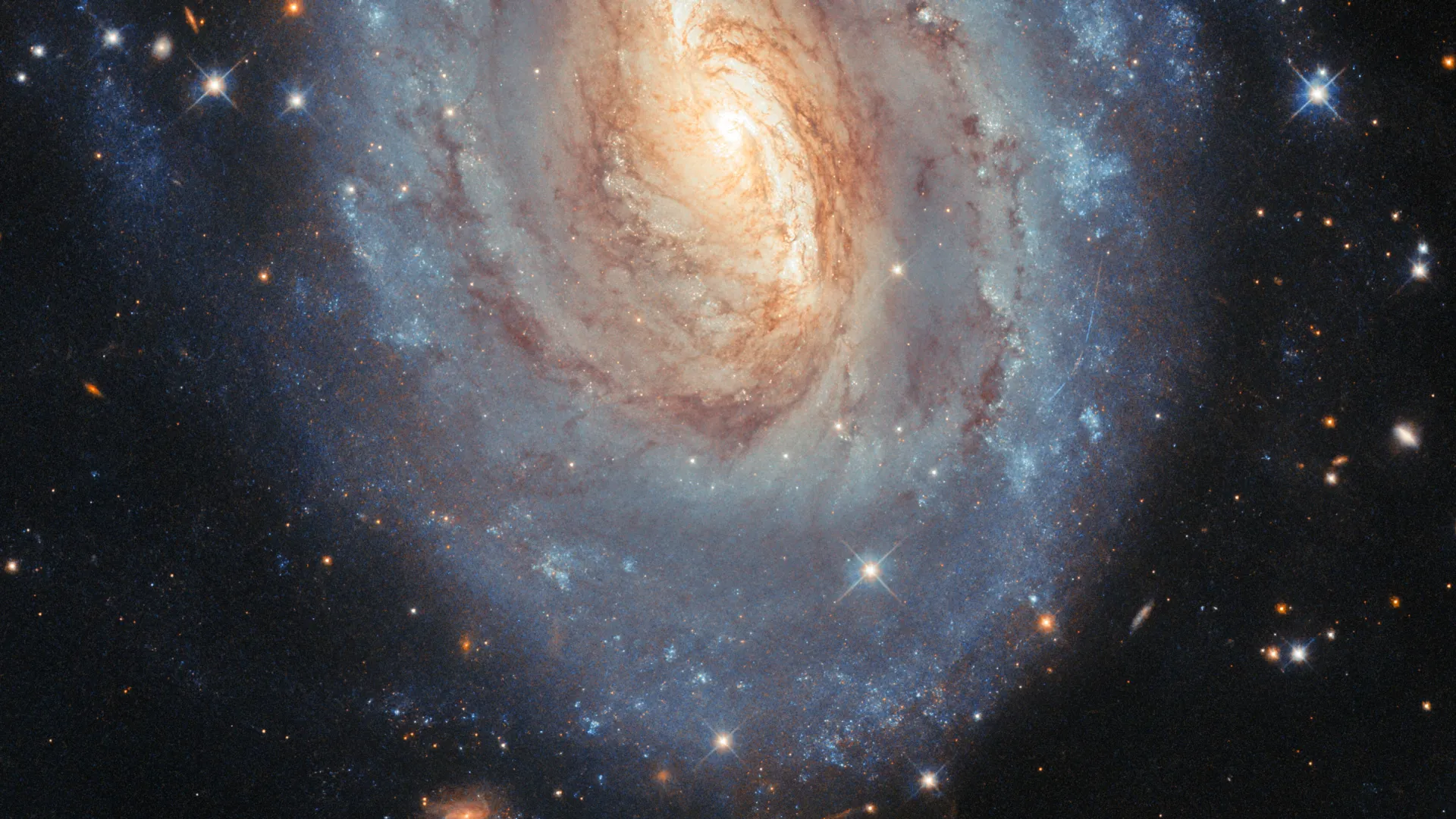Hubble captures a galaxy that glows in blue and gold
- Date:
- October 7, 2025
- Source:
- ESA/Hubble
- Summary:
- Hubble captured a breathtaking view of NGC 6000, a spiral galaxy where blue newborn stars shine beside golden, aging ones. The image also reveals traces of ancient supernovae still glowing faintly among the stars. As a bonus, an asteroid crossed Hubble’s field of view, leaving bright streaks that photobombed the shot. The result is a vivid snapshot of cosmic beauty and chance.
- Share:

A dazzling collection of stars fills this new NASA/ESA Hubble Space Telescope image of the spiral galaxy NGC 6000, located about 102 million light-years from Earth in the constellation Scorpius.
NGC 6000's golden core and bright blue spiral arms reveal striking contrasts in the ages, sizes, and temperatures of its stars. The central region glows yellow because it contains older, smaller, and cooler stars. These stars emit redder light than their hotter, more massive counterparts, which shine blue. Along the galaxy's sweeping arms, vibrant clusters of young, hot stars create the brilliant blue hue seen in the image.
Hubble gathered this data as part of a project studying sites of recent supernova explosions in nearby galaxies. NGC 6000 has hosted two in recent years: SN 2007ch in 2007 and SN 2010as in 2010. Using Hubble's highly sensitive instruments, astronomers can detect the faint afterglow from supernovae long after they've exploded. These lingering traces help scientists estimate the original masses of the stars that went supernova and determine whether they had stellar companions.
A closer look at the right side of the galaxy's disk reveals a curious extra feature: four thin yellow and blue streaks. These are not part of the galaxy at all, but an asteroid passing through our Solar System that happened to move across Hubble's view as the telescope observed NGC 6000. Each streak marks a separate exposure taken in succession, with short pauses between them. When combined, these exposures produced the final composite image. The colors correspond to specific filters that captured narrow ranges of red and blue light. Collecting separate exposures in different colors helps astronomers compare stellar properties -- while also making unexpected visitors like this asteroid stand out clearly.
Story Source:
Materials provided by ESA/Hubble. Note: Content may be edited for style and length.
Cite This Page: